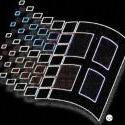Content Type
Profiles
Forums
Events
Everything posted by win32
-
Is this Tidal a 32 bit or 64 bit program? Only a 64 bit version of shell32.dll is available at present.
-
You use this code: [spoiler] [/spoiler]
-
A good way for a Vista user using the Security Monthly Quality Rollups to determine whether they have telemetry, is to run netstat -b in Command Prompt/PowerShell as administrator with no programs running (especially web browsers). You get a few hits on a standard Windows 10 and Windows 7/8.x with telemetry, but not on Windows 7 without telemetry updates as well as Windows 10 LTSC with services like Diagnostic Policy Service disabled (in the latter case, simplewall may have been running with many system components blocked from making connections, but I don't remember).
-
I can't believe it's been so long since the most logical desktop UI was released. Windows NT API functions + DOS/win16 compatibility, FAT32 and basic USB support are pretty important as well. I started using Windows 98 long before I started with 95, but when I got my PIII machine, 98 was flaky beyond belief. I asked for opinions and some said that the near constant crashes were due to overheating. Then I went outside the next day. A razor-thin object hit my forehead and cut it. Turned out to be a Windows 95 OSR 2.1 CD-ROM. Used my 98FE OEM CD-ROM to boot it. And it installed with no issues. So those crashes were likely not related to hardware. My only problem was that the system would fail to boot or even be broken completely if the USB supplement was installed. But replacing the S3 Savage4 with a GeForce FX 5700 LE fixed it. I'm still quite satisfied with Windows 95, After Dark 10th anniversary edition, Office 2000 Professional and RetroZilla 2.2 (until MSFN broke in it earlier this morning due to apparent change in encryption. nice coincidence. ). I never, ever swap with 128 MB of RAM! I'd love to go back 15 or 20 years so I could run 95/98 as a main OS dual booting with Windows 2000 and not have to worry about compatibility issues. Seriously, since I dumped the Savage4, win95 has never given a BSoD or even inexplicable crashes of system executables (98SE did that to me often).
-

the installation of windows 2000 was blocked in LENOVO G500
win32 replied to windows2's topic in Windows 2000/2003/NT4
This, as well as all newer releases support the Intel 7 series. I'd like to post a direct link but BWC's sites are not hotlink friendly. -
So it appears that all of the files that are modified to accommodate SHA-2 support are not part of the extended kernel, except for winload.exe (which is just a minor patch to allow for the patched ntoskrnl to work). So the extended kernel should not interfere with SHA-2. I believe that some extended kernel users are installing new SHA-2 signed updates.
-
Wouldn't the OS-level SHA-2 support be sufficient? And which Rust are you talking about? The programming language upon which newer Firefoxes are built, or the game? I'm trying. I'd really love to have Vista running stable on my Kaby Lake laptop as well. 2012R2 looks like Windows 1, and having Vista's UI would be a major improvement (I'm also going to work on getting graphics drivers like my Intel HD 620 ones working too). I had previously narrowed it down to the function LoadLibraryExW, and I recently installed Windows 7 build 6519 which has a very similar version of the function, and also doesn't have those bugs. But simply transplanting the function failed, as it resulted in a BSOD where "the system couldn't find the file specified (@98w9asoise590dj.dll [or similar nonsense file name])". But after trying a few more things, I think I've narrowed down the problems to one particular part of the function. But making a good patch will be very challenging. What also doesn't help is that this laptop has broken hinges, so I can't bring it to where I am half of the time.
-

the installation of windows 2000 was blocked in LENOVO G500
win32 replied to windows2's topic in Windows 2000/2003/NT4
If it works with XP x64 (which it does), then it should work with Windows 2000. But you must make sure that the AHCI drivers are present on that machine as well. -

the installation of windows 2000 was blocked in LENOVO G500
win32 replied to windows2's topic in Windows 2000/2003/NT4
Intel Rapid Storage Manager 8.9, the one @jaclaz linked, does need extended core, but version 7.6 which is also on win2k.org, doesn't. -

the installation of windows 2000 was blocked in LENOVO G500
win32 replied to windows2's topic in Windows 2000/2003/NT4
So you have two problems: non-functioning AHCI drivers and a crappy ACPI-BIOS implementation. The "iastor.sys is corrupt" error can be bypassed by slipstreaming SP4 UR1 or USP 5.1 (though the latter has issues with USB 1.1 drivers and KB888111 if that is not slipstreamed at the same time). And there may be another issue coming into play with Windows 2000 USB installs and non-ACPI HALs, where it may fail to load AHCI drivers totally (I've experienced it on a Kaby Lake laptop and a Xeon X5670 machine where Windows 2000 successfully installed from USB using AHCI and the ACPI MP HAL). The second one will have to with disabling devices like serial ports, which may not be possible with your BIOS. -

the installation of windows 2000 was blocked in LENOVO G500
win32 replied to windows2's topic in Windows 2000/2003/NT4
The freezing on "Setup is starting Windows 2000" is likely not related to the installation media or to AHCI drivers. It happens with many newer BIOSes, especially InsydeH20 as well as all revisions of Apple BIOS emulation. It happens because Windows 2000 has problems detecting certain extraneous hardware like serial ports with these newer boards. Perhaps ntdetect.com can be modified to not detect serial ports/floppy drives by default on newer machines? What happens when you press F5 and select "Standard PC" when Windows 2000 setup starts loading? -
That's the right string, but you will have to look at the three green colours, 01 65 53, 00 92 89 and 04 DC 8E. In RGB colour values, those are 083 101 001, 137 146 000 and 142 220 004 respectively. So look for the RGB values for the shades of pink you want to use, reverse them and convert to hex. Then replace those three values in the string. You should probably copy your ntoskrnl and give it a different name like ntkrnlmp.exe. And then bcdedit /copy {current} /d "Windows Vista Custom Boot Screen" And then remember the long number/ GUID value that you get from this message: "The entry was successfully copied to {01234567-89ab-cdef-00ff-fff000ffffff}" (for example) so you can do this: bcdedit /set {01234567-89ab-cdef-00ff-fff000ffffff} kernel ntkrnlmp.exe And then there is the code signing enforcement that Vista and up introduces. I made a cracked ntoskrnl for that purpose, but you may also want to do this: bcdedit /set {01234567-89ab-cdef-00ff-fff000ffffff} nointegritychecks 1
-
Is it me, or lots of people think that WiFi == Internet?
- Show previous comments 2 more
-
.png.3c9dc4f3b1255c45b307f0e781486565.thumb.png.22664a2751ea68c4eca6477931bbc3b9.png)
Yes they think wifi=internet and have no concept of LAN 😂 I know some id*** who recharge their mobile data when their monthly broadband expires, then when it doesn't work, they charge their broadband 😂😂
-

-

-
That's because of those user32 functions I added. But I haven't touched powerprof.dll, which apparently caused problems as well. 15.7.1 misses ntoskrnl function sprintf_s. And the 16.x series adds RtlDowncaseUnicodeChar. That may be because I put my new code and export table below the rsrc/reloc sections, which doesn't correspond to MS convention, yet seems to the easiest way to do it on x64. I'm gonna have to check out whatever reshack does to these files myself.
-
He fixed this problem a long time ago: And I also found that WindowBlinds 3.1a is the last version to work properly on Windows 2000 extended kernel with PrintWindow enabled. While PrintWindow can be disabled, Serpent 52 uses PrintWindow and thus has problems rendering its borders with WindowBlinds 3.3+/4.x even if the main user32 has PrintWindow disabled.
-
Maybe it was something like this: But yeah, I just noticed that spam link in that guy's quote.
-
And now, in the U.S., most commercials for services promote them as mobile-only (we're on Google Play and the Apple Honourable Supreme Ruler Tim Cook App Store, but if you just have a PC, get lost). Even those where proper URLs are given, they are often typed in on smartphones. Sometimes laptops. Desktop computers are no longer acknowledged in North American marketing, even for computers themselves.
-
After winload and ntoskrnl were successfully cracked, I decided to try loading custom ntdlls, with new sections added to their ends. It failed to load them. So if even a modified winload/ntoskrnl couldn't load them, perhaps some signature checking routine exists in ntdll as well? And much like in the kernelmode files, it may have been something that could only be picked up on with the debugging symbols. You can get the full debug symbol packages for Windows 2000 to 7 SP1 from here: http://web.archive.org/web/20110903004616/http://msdn.microsoft.com/en-us/windows/hardware/gg463028.aspx They took down the offline packages because of Windows 10's frequent updates making its symbols outdated rapidly. Since there has always been a desire to experiment with drivers and kernelmode code, no one has had the same drive to manipulate ntdll in such a way (exploits notwithstanding). So there isn't much information on the subject. First I see a function named LdrpCheckCorImage. It seems to be linked to .NET Framework 2.0. Not very interesting. But I do see RtlCreateUserStack which calls RtlImageNtHeader. The latter is also called by LdrpSetProtection. But most interesting of all may be RtlpCheckHeapSignature and RtlpGetColdpatchDebugSignature. And now I wonder about how other usermode files have their signatures checked in NT 6.2 and up. UPDATE: it appears that the ntdll failure was not directly related to digital signatures, but to the way the file was modified. After testing with 2012R2's explorer.exe, I found that you must use another tool to remove the digital certificate before modifying the file, or else it will be broken. Once the signature was removed with this tool, and a miniature section was added to the explorer.exe, Windows complained about the lack of a digital signature. Booting with DSE disabled allowed the modified explorer.exe to run. Now I need to replicate these results with Vista's ntdlls, but it will be six days before I can return to an appropriate testing environment.
-
Strange. I typed the full hex string into HxD's search and got a match. And you can find that page here: http://web.archive.org/web/20030605104342/http://www.geocities.com/thejjoelc/XPbootcolors.html But I'm not sure if it would work well with x64 executables or Vista itself (for one thing, boot.ini has been deprecated). If you only need to change the colour of the progress bar, you only really need to change the appropriate hex values. As for my winload/ntoskrnl combo, it appears that all a user will have to do is bcdedit /set nointegritychecks 1, then copy over my versions outside of the OS, or set up an alternative boot menu entry with my files renamed while the OS is running. My patched files are stable, but I need to test modified ntdlls.
-
Sure. But you will have to change the colour palette in ntoskrnl by changing some of the applicable hex values. On the page I mentioned above, you will find the ones that are green. You will have to find the RGB colour values for the two (or three?) shades of pink you want to use, and then put them where the green shades were, in hex format and reversed. So, for example, RGB colour value 32 26 21 will become 15 1A 20.
-
Yes, but like XP, it uses a custom palette which means that it will appear as completely black in Resource Hacker (it's in ntoskrnl.exe). The palette data is stored in ntoskrnl as well. In fact, the palette is the same as XP so everything (except for maybe the progress bar parameters) in this guide applies: http://www.virtualplastic.net/html/logo_scr.html#winxp
-
This has been a longstanding problem on Windows 2000 and Server 2003 x86, since the beginning of 2019. And the error message given when running the installer on an unsupported OS states that 2003 is a supported platform!! XP x64 was working last I checked (so sometime last year), but there have been various complaints about this issue on XP x86. I didn't know assembly back in them dark days, but I do now. So in PotPlayer x86 1.7.21280.0 (as identified by the DLL's version number), there is the following code in PotPlayerMiniXP.exe (which may be renamed to PotPlayerMini.exe in the program folder): 00401734 loc_401734: ; CODE XREF: wWinMain(x,x,x,x)+116�j .text:00401734 lea ecx, [ebp+var_5] .text:00401737 call unknown_libname_3 ; Microsoft VisualC 2-11/net runtime .text:0040173C lea edx, [ebp+var_230] .text:00401742 push edx ; wchar_t * .text:00401743 lea ecx, [ebp+var_5] .text:00401746 call sub_402450 .text:0040174B movzx eax, al .text:0040174E test eax, eax .text:00401750 jz loc_4019FF <--------------------------------------- The problem. It calls the error code .text:00401756 push 8 ; size_t .text:00401758 call ??2@YAPAXI@Z ; operator new(uint) .text:0040175D add esp, 4 .text:00401760 mov [ebp+var_24C], eax .text:00401766 cmp [ebp+var_24C], 0 .text:0040176D jz short loc_401789 .text:0040176F lea ecx, [ebp+var_230] .text:00401775 push ecx .text:00401776 mov ecx, [ebp+var_24C] .text:0040177C call sub_401A90 .text:00401781 mov [ebp+var_288], eax .text:00401787 jmp short loc_401793 .text:00401789 ; --------------------------------------- So change that jz loc_4018FF to jmp 401756h (for those with IDA). If you just have a hex editor, search for the following sequence of bytes: 0F 84 A9 02 00 00 6A 08 E8 3F 1D 00 00 83 C4 04 change it to: EB 04 A9 02 00 00 6A 08 E8 3F 1D 00 00 83 C4 04 And then, for the first time in 19 months: It will work on all other platforms. For the regular PotPlayerXP.exe, change: 0F 84 4D 02 00 00 6A 08 E8 35 1D 00 00 83 C4 04 to EB 04 4D 02 00 00 6A 08 E8 35 1D 00 00 83 C4 04 For PotPlayerMiniXP64.exe, change: 0F 84 39 03 00 00 B9 10 00 00 00 E8 4D 20 00 00 to: EB 04 39 03 00 00 B9 10 00 00 00 E8 4D 20 00 00 PotPlayerXP64.exe, change: 0F 84 33 03 00 00 B9 10 00 00 00 E8 4D 20 00 00 to: EB 04 33 03 00 00 B9 10 00 00 00 E8 4D 20 00 00
-
I think they mean that they could patch the files on-demand at boot as opposed to modifying the files themselves. I think there are ACPI patchers for XP that do that. And winload.exe, which is explicitly mentioned as such in the tutorial, is not used on UEFI. winload.efi is used instead.
-
I will supply the modified winload/ntoskrnl. Perhaps even make a script to make/modify the boot manager entry. The second guide is intended for BIOS/MBR.
-
It seems like this could help achieve my newest goal: https://github.com/Mattiwatti/EfiGuard This disables PatchGuard and Driver Signing Enforcement, but only with UEFI. And apparently W7 can run with Secure Boot on with this applied (possibly Vista as well?). But, what about us Tandy 1000 users with our obsolete BIOS and MBR (oh, and don't forget Tandy graphics. Aero looks exceptionally awesome with those)? This guide to patching should suffice: http://web.archive.org/web/20170812173323/fyyre.ru/vault/bootloader.txt Well, I think I saved myself a lot of time searching through ntoskrnl in IDA and seriously advanced the cause of Windows Vista. Great thanks to those who also want to control the OS, as opposed to having the OS control you.


